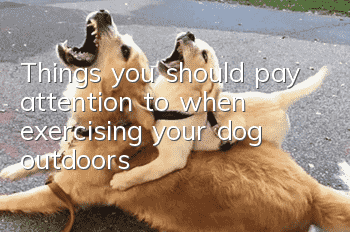Training Samoyed Dogs to "Sit", "Stand" and "Lie"

When starting to train this subject, although the dog is trained to stand, sit, and lie down separately, Samoyed dogs often do these three independent subjects in succession. Therefore, each subject must be trained separately in detail, and these subjects must be trained in diverse combinations. Diversified training not only prevents Samoyed dogs from feeling monotonous and bored, but also allows Samoyed dogs to concentrate and increase their excitement. In the early stage of training, the requirements for Samoyed dogs should not be too high. Just keep each action for 3-5 seconds every day. Generally train twice a day. 5-10 minutes each time. The training goals for young Samoyed dogs are: the Samoyed dog can remain standing, sitting, and lying down for 15-30 seconds each, and can follow the dog on a leash, and the trainer can call it to come.
When starting to train standing subjects, train in a relatively quiet environment so that the Samoyed dog can concentrate. The trainer should have an expressive face and a soft and pleasant voice. If you suddenly stare, push or pull the dog, the dog will think that it has done something wrong.
Training essentials: First, let the Samoyed dog sit in front of the trainer, with the head facing the right elbow and the tail facing the left side of the trainer. Then the trainer grabs the top or side of the collar with his right hand, and at the same time puts his left hand under the Samoyed's belly and leans on the hind legs, with the palm of his hand facing down, calls the Samoyed's name and issues the "stand" command (drag). long tone).
When the "stand" command is given, gently lift the collar forward and touch the Samoyed's hind legs to make the Samoyed stand (do not hit the Samoyed's legs, just touch its legs gently, and do not use force). Yank Samoyed standing). When the dog stands, the left one is still in place to keep the dog in a standing position. It is best to keep the dog standing for a few seconds at a time.
When training a large Samoyed dog, put your left arm under the Samoyed dog's belly and touch its hind legs with your palm. If the Samoyed dog wants to move, you can use your palm to control the Samoyed dog from the side to keep it in the correct position. Give one or more "stand" commands and let the Samoyed dog remain standing for a period of time. Use your right hand to give gesture instructions to the Samoyed, with the fingers of your right hand close together, and the hand is often about 10 cm away from the Samoyed's face.
When giving the "stand" command, quickly raise your hand 3-6 cm away from your face. If you touch the Samoyed's face, don't stop. When commanding the Samoyed to "stand" with a command or gesture, the left hand should remain in the original position and try to make the Samoyed stand for a few seconds. After the Samoyed dog stands in obedience to the command, it must be rewarded. sit
This subject starts training in a standing position, with the Samoyed dog's head facing the trainer's right elbow, the trainer's right hand grasps the collar, and the left hand is still placed on the position when training to stand. On this basis, first remove your left hand,Call the Samoyed's name and give the "sit" command. At the same time, gently pull the collar upwards and back with your right hand, and push the Samoyed's hind legs and knees with your left hand to make the Samoyed sit down. The movements should be light and smooth, and do not push hard to avoid breaking the Samoyed's legs. When the Samoyed dog sits up, give the delay command and gestures. If the dog has done well, reward it fully and gently stroke the dog to eliminate its fear and fully relax it. Lying
Introduce lying from the sitting position. Although Samoyed dogs usually like to lie down, they don’t like to be forced to lie in one position. It is not easy to make a Samoyed dog extend its two forelimbs forward from under the body in a regular manner when lying down and maintain this posture.
The training steps are as follows:
The first step: let the Samoyed dog relax first, so that it will be easier to train him to lie down. During training, put the young Samoyed on the table. The trainer's left arm goes around the Samoyed's back, raises one front leg a few centimeters and shakes it up and down. If the Samoyed cooperates, praise it and then gently lower the leg. , use your right hand to lift the other leg to do the same shaking, and praise it. The purpose is not to instill fear in the Samoyed.
Step 2: Lift both legs at the same time and rock them back and forth to relax.
The third step: Based on the second step, call the Samoyed dog's name and give the command "Lie", then gently stretch the foot forward until it is in the appropriate position, put it down, and then reward it. Large Samoyed dogs should be trained on the ground, with the Samoyed dog sitting sideways in front and close to the handler's body. This will help control the Samoyed dog's rotation.
The trainer grabs the collar with his right hand, and grabs the forelimbs with his left hand over his back. He lifts the two limbs and shakes them up and down to relax them. He shakes his legs while praising them, so that the Samoyed dog is less likely to be frightened. He keeps shaking until the Samoyed dog relaxes. Then the left arm goes around the Samoyed, and the elbow is placed on the Samoyed's hip, so that the Samoyed is in a lying state. During the process of putting down the forelimbs, continue to shake the forelimbs and call the Samoyed dog while giving the command "Lie".
When the Samoyed is lying down, take your left hand away from the Samoyed's back and gently give the "Lie -" delay command and gesture to the Samoyed. The voice of the command should be gentle so that the Samoyed is not in a hurry to get up. , in the initial training, it is enough for the Samoyed dog to lie down for 3-5 seconds.
The goal of this stage is that the Samoyed can lie down quickly as soon as he hears the command without help. When necessary, the "Lie-" delay command or gesture can be given to allow the Samoyed to continue to lie down. As long as the methods introduced above are mastered well and applied properly, good training results can be achieved. When training, do not use the method of rotating and pressing the Samoyed's head to lie down with the Samoyed. In this way, the Samoyed will not only refuse, but also feel resentful and helpless. Try to createA relaxing environment for your Samoyed to lie down. Conversion training between standing, sitting and lying down
This stage mainly trains Samoyed dogs to switch between standing, sitting and lying down. This is a very important basic training. It needs to be based on all training movements being in place. The key to getting the Samoyed right is to focus the dog. Start by asking the Samoyed dog to sit, stand, sit in order, then sit, lie down, sit, and finally sit, lie down, and stand.
When various subjects change, the repeated training time should not be too long, because the attention of young Samoyed dogs is limited, and the training time will be too long, which will make the Samoyed dog bored. If the trainer needs the puppy to maintain a certain posture, he can give the puppy an auxiliary delay command between the sit, stand or lie down commands until the puppy can complete it well before abandoning it.
Don't rush your training, make sure there is some time between commands, and don't change commands too quickly or chain them together. The trainer should give commands slowly and speak clearly.
Finally, don’t forget that when the Samoyed dog can complete the actions required by the trainer, it must be fully rewarded. When young Samoyed dogs complete the training subjects well, the trainers tend to speed up the training accordingly. If you really want to minimize the prompts, you should take some time to let the young Samoyed forget those special "helps". It is best to gradually stop using redundant auxiliary commands or actions. If these auxiliary commands and actions continue for too long, It is possible to confuse the Samoyed.
- Is the super reliable anthelmintic drug easy to use? Sharing the experience of the shit shoveling officer~
- My dog's mouth is smelly and drooling, what can I do?
- How should Shar-Pei be trained? Introduction to Shar-Pei training methods!
- What is the reason why dogs suddenly have weakness in their hind legs in winter?
- How to give potions to dogs
- What is the process of giving birth to a dog?
- What to do if your Norwegian Elkhound has bad mouth
- How to treat otitis externa in dogs
- What are the strength training methods for Tibetan Mastiffs?
- Why is the dog losing hair?



